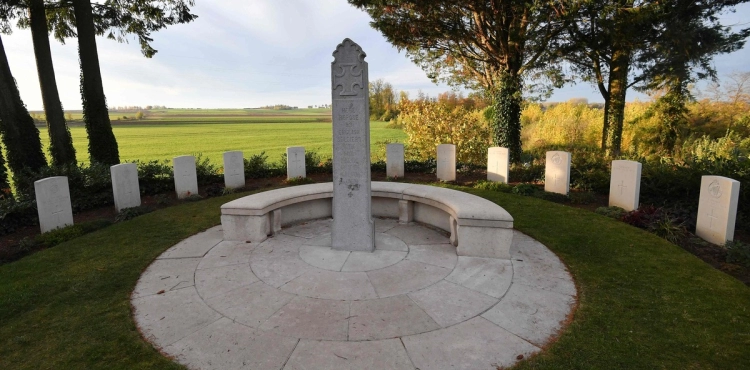The 139 memorial sites from World War I in France and Belgium, which the United Nations Educational, Scientific and Cultural Organization (UNESCO) included on its World Heritage List on Wednesday, have witnessed a significant growth in tourism traffic for years, as thousands flock to them to commemorate the horrors of the first global conflict in which millions of people from dozens of countries were killed. .
Judy Budd, who has come from Melbourne to view the Australian Memorial Site in the town of Villers-Bretonneau in northern France, one of 139 such monuments, is impressed by the neatly aligned tombstones of more than 2,000 burials. She says those buried at the site "were in some cases as old as our son."
These French and Belgian burial sites, spread between the Belgian regions of Flanders and Wallonia and the French north and northeastern regions, embody the atrocities of World War I, which left 10 million dead from 130 countries, in addition to the amputation of 20 million people, according to the French Ministry of Culture.
Judy, who went to the place with her husband John, wrote two names on a scrap of paper, belonging to two soldiers from her hometown of Maroondah, near Melbourne. She also placed "a small Australian flag and a paper poppy" on their graves.
The couple made this trip to Europe on the occasion of their fiftieth birthday. Before Paris, Lyon and Italy, the duo devoted three days, between northern France and Belgium, to these memorial sites on what was known as the “Western Front” during World War I.
The list preserved by UNESCO attests to its universal character: a Portuguese cemetery, an Indian memorial, or even the largest Chinese cemetery in France, in Neuilly-sur-Mer (north), where 842 Chinese who served the British army behind the front are buried.
Many of the sites are cemeteries and memorials for countries in the Commonwealth that attract large numbers of British, Canadian and New Zealand tourists. Judy Buddy believes that "the duty to remember is more necessary for us than for the French."
Like her, Edwina and Joshua, 27 and 29, from Sydney, are taking advantage of a two-month holiday in France to visit the memorial. “After making the trip, we realized the distance that separates our country from Europe, and the sacrifices our soldiers made for us,” she says.
Christian Bergé, director general of the tourism office in the city of Arras (northern France), confirms that tourists from the Commonwealth "share the same Anglo-Saxon culture of commemorating ancestors who fell on the field of honor."
At the end of August, the New Zealand All Blacks rugby team, ahead of the sport's World Cup in France, visited a site called Wellington Quarry in Arras, a network of halls redeveloped by New Zealand soldiers during the war.
Christian Bergé confirms that the place “has become a memorial + central + visited by more than 60,000 visitors annually,” considering that inclusion on the UNESCO list “will strengthen the management of the heritage of these sites and protect them.”
In recent years, the demand for memorial sites has increased with the advent of the centenary of World War I, according to Jan Klinker, head of the National Monuments Committee "Hartmanswillerkopf" in the Alsace region in eastern France, but this trend has subsided due to the Covid pandemic.
The Thiepval memorial in northern France has lost half its visitors, most of them Britons, since the outbreak of the epidemic. But they are "slowly coming back," says Pascal-Louis Caillaux, of the Commonwealth War Graves Commission, which manages 51 of the 139 sites.
Olivier Girard, director of the Dumont Museum, which houses the remains of 130,000 unidentified soldiers killed during the Battle of Verdun, confirms that “its classification as a World Heritage Site means a 30% increase in visitors.”
In this place, which receives between 250,000 and 300,000 visitors annually, Girard notes “a renewed interest,” driven in particular by “young people between the ages of 20 and 30 who are exploring their family history and seeking to know their roots.”
He hopes that inclusion on the UNESCO list “will allow this memory to remain alive to prevent us from repeating this madness... even if that is just wishful thinking.”
UNESCO blocked the nomination of these Franco-Belgian sites, which was submitted in 2018, which led to the postponement of the study of these files, under the pretext that such a step “may be used for nationalistic purposes,” recalls Belgian historian Dominique Dendoven, a member of the scientific committee of the application.
He added, "We wanted to prove that these places, in which soldiers of more than 130 current nationalities are buried, are first and foremost places where cultures meet," explaining, "We are working for a better world."
Tourism boom associated with World War I memorials












